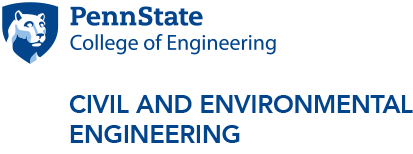Women Advancing River Research—From Soils to Streams: The Structure and Function of the Critical Zone in the Anthropocene
Abstract: Soils and streams are intimately connected via water flow paths. Yet their respective sciences have progressed without as much integration, therefore limiting mechanistic understanding and forecasting of the land and river response to human- and climate-induced perturbations.
Recent analyses of large soil datasets have shown a strong linkage between the controls of soil organic carbon, macroporosity development, and land-atmosphere exchanges of water. Landscape experiments show that within a human timescale, soil aggregation, carbon dynamics and solute fluxes at great depths are shifting as a result of changes in land cover. These data beg the questions of how, to what degree, and at what rate will changes in the Anthropocene alter CZ structure
In addition, how will the changing CZ structure alter CZ functioning, and ultimately what show up in streams and rivers? Recent stream flow and chemistry data and watershed hydro-biogeochemistry modeling has propelled the idea that flow paths at different depths connect source waters of distinct chemistries to streams under variable climate and weather conditions, and that the extent of shallow-versus-deep chemistry contrast predominantly shaping solute export patterns in streams. Broadly, this shallow and deep hypothesis offers a simplified conceptual framework that links CZ structure to stream functioning. It alludes to the potential of using streams as mirrors to “read” the often-arduous-to-measure CZ structure characteristics.
Bio: Dr. Pamela Sullivan is an associate professor at the College of Earth, Ocean, and Atmospheric Science at Oregon State University. She received her bachelor’s degree in forestry at the University of British Columbia in Canada and her doctoral degree in geologic sciences from Florida International University. She worked at both Florida International University and Penn State as a postdoc before taking her first faculty position at the University of Kansas. Sullivan’s lab group focuses on how critical zone processes influence the flux and quality of water from land to streams. Pam is active in the Critical Zone community and collaborates broadly with ecologists, geologists, biologists, computer scientists, and engineers. Dr. Sullivan is a recipient of AGU Hydrologic Sciences Early Career Award in 2021.
Bio: Dr. Li Li is a professor in environmental engineering at Penn State. She received a bachelor's and master’s degree in environmental chemistry from Nanjing University in China and a doctoral degree in environmental engineering and water resources from Princeton University. She worked at the Lawrence Berkeley National Laboratory as a postdoc and as a research scientist before joining faculty at Penn State. Her group?asks questions on how external drivers and internal structure regulate water flow paths and biogeochemical processes at the watershed scale under diverse climate, geology, and land use conditions. She is active in the Critical Zone community and collaborates broadly with biogeochemists, hydrologists,?ecologists, and geologists.
Additional Information: Registration is required.
Event Contact: Li Li



